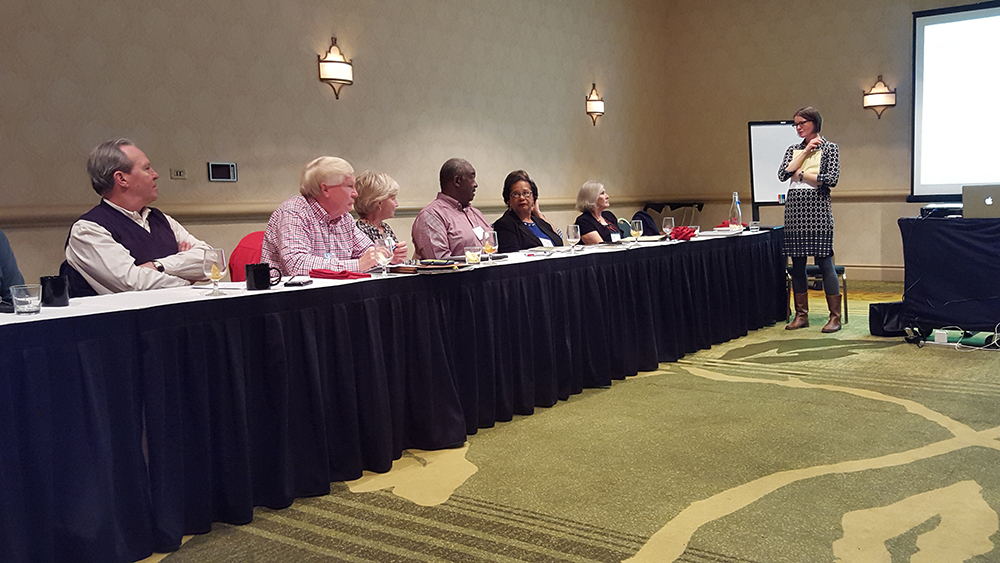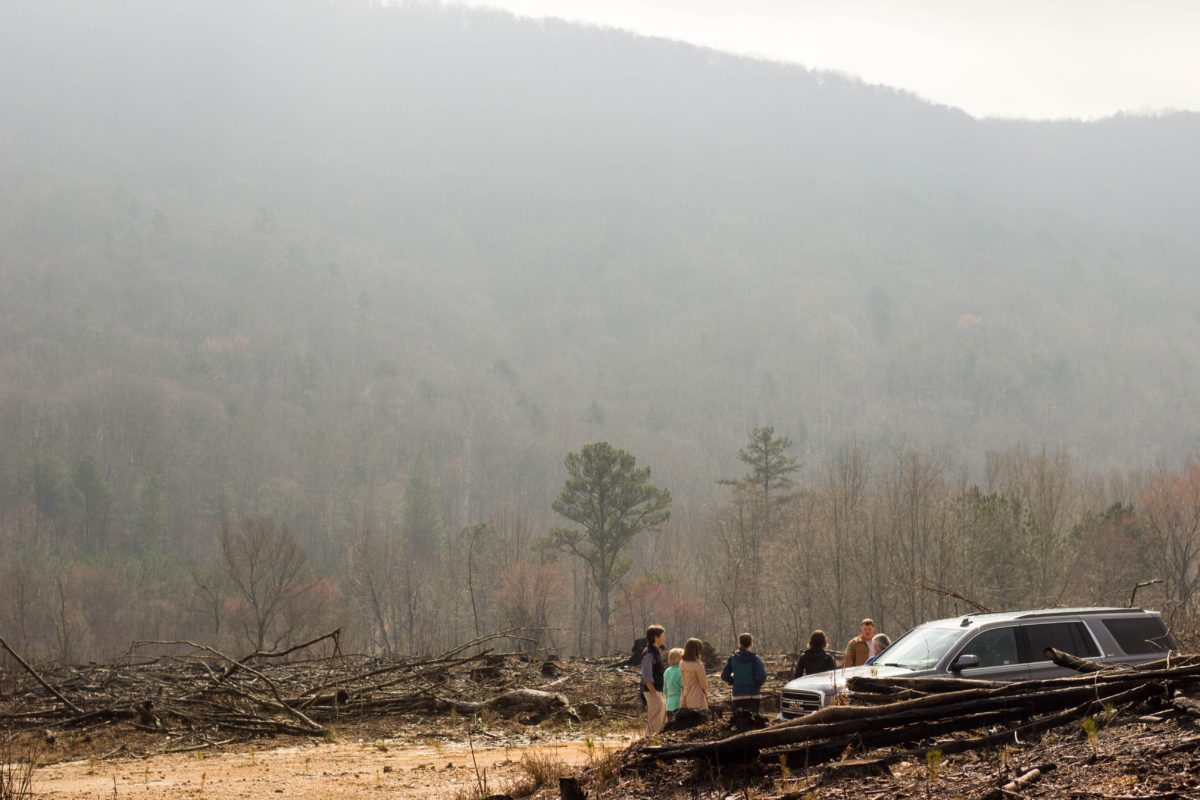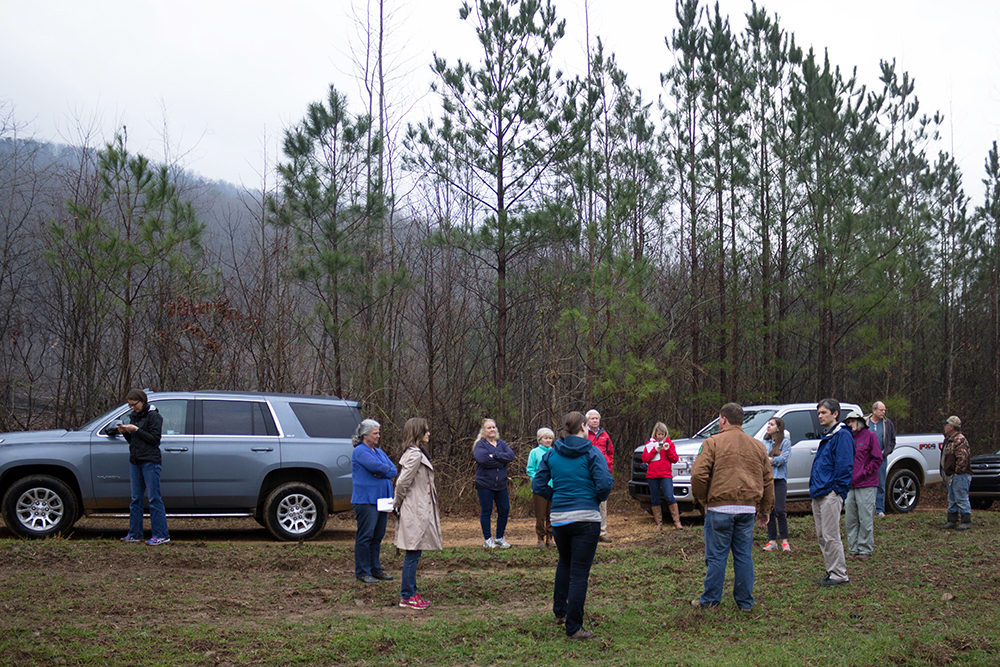Robert Brown looks over the valley of hardwoods and pine trees that five generations of his family have planted and harvested before him. He points out the multi-million dollar homes that sit on the ridge that backs up to his property. Those houses will probably put him out of business one day, he says. There is a popular vacation destination just over the ridge and those houses are driving up his property taxes. As real estate taxes grow with the influx of higher property values around him, Robert worries that he will be unable to keep his land.
 Development expanding in the region is not the only challenge he faces as a young woodland owner who is trying to continue the family legacy of managing more than 500 acres of forest land. While some crops such as corn are harvested and regrown annually, trees in the Southeast often take 15 to 30 years to become ready for harvest. Once trees are ready for harvest, finding mills that will buy his timber and pulp at a competitive rate is challenging. Prices for wood and pulp are low, and even if he can nurture and maintain a tree from seedling to fully-grown, environmental factors such as ice storms and hurricanes can wipe out his crop overnight.
Development expanding in the region is not the only challenge he faces as a young woodland owner who is trying to continue the family legacy of managing more than 500 acres of forest land. While some crops such as corn are harvested and regrown annually, trees in the Southeast often take 15 to 30 years to become ready for harvest. Once trees are ready for harvest, finding mills that will buy his timber and pulp at a competitive rate is challenging. Prices for wood and pulp are low, and even if he can nurture and maintain a tree from seedling to fully-grown, environmental factors such as ice storms and hurricanes can wipe out his crop overnight.

One of the biggest concerns family woodland owners shared at the recent Woodland Owners and Brand Owner Summit, hosted by the American Forest Foundation and the Forest Products Working Group, was their concern for the future of the land when the cost of managing it is so high, and the market return is so low. This was exacerbated for landowners that have longstanding family and emotional ties to the land and hope to pass it along, but their children have live away from woods and may not value it in the same way.
“We have concerns about the future of our tree farm. Will our kids be able to inherit a tree farm that they can pass along?” questioned one landowner.
One landowner brought her middle-school aged daughter to the Summit. She wanted for them to learn about sustainable forest management alongside each other, she said. Another landowner talked about the need to educate students about the importance of forests in school. One landowner joked that the younger generations care more about getting a new car than taking over a forest farm.
“I don’t have a crystal ball. I have strong ties to the land because of my parents and I want to see it forward to the next generation, but lives change and I don’t know what the future holds,” said another landowner.
Landowners also expressed concerns about hurricanes, and wildfire, as well as invasive species and insects as a threat to the longevity of their woodlands.
Brand Owners at the event (McDonald’s, Mars,Time Inc, Staples, Havi Global Solutions, andMacmillan Publishing) similarly expressed a desire to ensure the future of the forests that would provide a sustainable source of wood and pulp for their business.

If landowners are unable to keep hold onto their land or keep that land as forests, it may affect the availability of not only the availability of domestic wood supplying supply chains but also the supply of other benefits, like clean water and wildlife habitat for Americans.
“One of our sustainability drivers is making sure we have our supply chains lined up for the long term,” stated one brand owner.
Many of the brand owners at the event represented the sustainability or packaging departments of their respective companies. They cited the fact that domestically-sourced wood from the Southeast was not only environmentally friendly because it won’t have to travel as much to the manufacturer, but also that it was the best quality of wood products of anywhere.
Brand owners also expressed gratitude toward the family woodland owners for sharing their stories because they can leave knowing that they know that they are supporting the legacy of family woodland owners with their purchasing decisions. Together they discussed ways in which they can more broadly share these stories with the public, in order to provide assurance that our forest caretakers are taking the necessary steps for the future.
“I’m hearing conversations about not just years as longevity, but generations. It’s an emotional issue and I get that now,” said one brand owner.



 To kick off the Summit, woodland owners described why they each owned land, noting family legacy, income, and a love of nature. Responding to questions from brand owners, they also described challenges they face such as insects and disease, natural disasters like wildfire and hurricanes, high management and property costs, and declining markets. Concerns about trust, and the future of the land as it is passed on to future generations were voiced as well.
To kick off the Summit, woodland owners described why they each owned land, noting family legacy, income, and a love of nature. Responding to questions from brand owners, they also described challenges they face such as insects and disease, natural disasters like wildfire and hurricanes, high management and property costs, and declining markets. Concerns about trust, and the future of the land as it is passed on to future generations were voiced as well.


